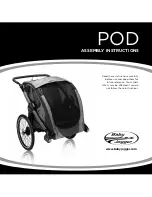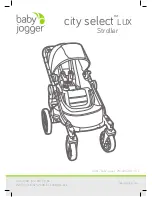
8-16
L90 LINE CURRENT DIFFERENTIAL SYSTEM – INSTRUCTION MANUAL
PROTECTION SIGNALING SCHEMES
CHAPTER 8: APPLICATION OF SETTINGS
8
as 65% of the line length. If the line being protected does not have a significant interaction with an adjacent circuit, then
the typical 80% setting can be used. If there is significant mutual coupling between the parallel lines, then the mutual
compensation feature of the ground distance elements can be used instead of a drastic reduction in the reach.
However, even in this case, there is more uncertainty compared with the phase distance elements because the zero-
sequence impedance of the line and thus the zero-sequence-compensating factors can vary significantly due to weather
and other conditions.
8.4.3.3 Ground distance zone 2
To ensure that zone 2 can see 100% of the line, inter-circuit mutual effects must be considered, as they can contribute to a
significant under-reach. Typically this occurs on double circuit lines, when both lines carry the same current. Conduct an
analytical study to determine the appropriate reach setting.
The main purpose of this element is to operate for faults beyond the reach of the local zone 1 element, and therefore a
time delay must be used similar to the phase fault case.
8.4.3.4 Ground distance zone 3
This remote back up function must have a reach that is set to account for any infeed at the remote bus, plus the
impedance of the longest line that terminates on this remote bus. Similar to the phase fault case, a zone 3 element must
be time coordinated with timed clearances on the next section.
8.4.3.5 Ground distance zone 4
As a further contribution to a remote backup philosophy, the reach of this element must be set to account for any infeed at
the remote bus. The time delay must coordinate with other time-delayed protections on the next line. The use of a lens
characteristic or load encroachment element is advantageous when load limits are a problem. To avoid extremely large
reach settings the L90 has the ability to implement any element, so that it is reverse looking. This strategy can be
beneficial if the reduced reach enhances the discrimination between the load and fault conditions. When adopted, this
approach must be implemented at both ends of the protected line.
8.4.3.6 Ground distance zone 5
An additional fifth ground distance zone can be used in special applications. This zone can be the start zone for arming
tripping from all other zones, in both forward and reverse directions of the of protected line. This zone can also be used as
an additional reverse-looking zone for implementation of two reverse-looking zones, thus providing two zone backup
reverse-looking protection. The fifth distance zone can be used as an alarm zone, indicating that load impedance is
approaching the zone characteristic.
8.5 Protection signaling schemes
8.5.1 Overview
The L90 includes the following common pilot-aided schemes:
•
Direct under-reaching transfer trip (DUTT)
•
Permissive under-reaching transfer trip (PUTT)
•
Permissive over-reaching transfer trip (POTT)
•
Hybrid permissive over-reaching transfer trip (Hybrid POTT)
•
Directional comparison blocking
•
Directional comparison unblocking
















































